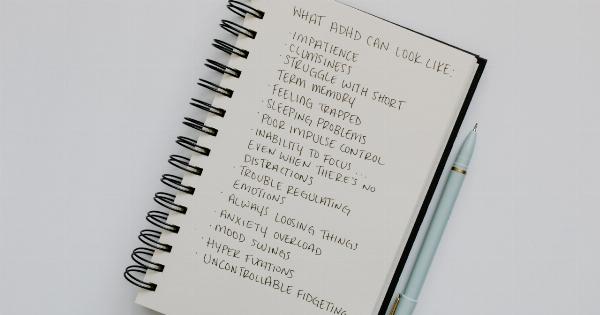Obsessive-compulsive disorder (OCD) is a mental health condition that affects millions of people worldwide.
It is a type of anxiety disorder, in which a person experiences irresistible and persistent thoughts, urges, or images that can be overwhelming and disruptive to daily life. OCD can also cause repetitive behaviors or mental acts that a person feels compelled to perform in response to these intrusive thoughts and fears. These compulsions may temporarily relieve anxiety but can lead to feelings of shame, guilt, and distress.
Types of OCD
OCD can manifest in different ways and with varying severity. While some symptoms may be more prevalent than others, the underlying mechanisms remain the same. Here are some of the types of OCD:.
1) Contamination OCD
Those with contamination OCD have a fear of germs and dirt and may feel an intense need to clean, avoid crowded places, or wear protective clothing such as gloves and masks.
They may be preoccupied with the possibility of contracting a disease or illness and may go to great lengths to avoid any perceived risk.
2) Checking OCD
Checking OCD is characterized by persistent doubts and intrusive thoughts regarding safety, such as forgetting to lock doors, turn off the stove, or unplug appliances.
Those with checking OCD may repeatedly check and re-check these things, often feeling uncertain and anxious despite repeated confirmations. Checking may also extend to medical concerns such as constantly monitoring vital signs or searching for signs of illness or injury.
3) Symmetry and order OCD
For those with symmetry and order OCD, disorder or asymmetry can cause intense anxiety. They may feel a need to arrange items in a specific order or count and organize objects repeatedly until they feel “just right.”.
4) Intrusive thoughts OCD
Those with intrusive thoughts OCD experience unwanted, recurring, and disturbing thoughts that can be sexual, violent, or blasphemous in nature.
These thoughts can be so severe that they may lead to feelings of shame, guilt, or disgust and can impact their emotional and physical well-being.
5) Hoarding OCD
Hoarding OCD is characterized by an intense need to collect and save things, even if they have no practical value or pose a physical danger.
Hoarders may struggle to part with items, and their homes may become cluttered and disorganized, which can interfere with social and daily functioning.
Compulsive Behaviors
Compulsions are repetitive, ritualistic, or mental acts that a person may feel compelled to perform in response to their obsessive thoughts and fears.
These behaviors are intended to lessen anxiety and prevent potential harm, but they can lead to a cycle of increased anxiety, guilt, and distress. Here are some common compulsions:.
1) Excessive washing and cleaning
Those with contamination OCD may develop compulsive washing habits, such as excessively washing their hands, avoiding certain items or places, and compulsively cleaning surfaces.
This can lead to dry, cracked, and irritated skin or other related medical conditions.
2) Repeated checking
Checking OCD can lead to repeated actions such as checking locks repeatedly, turning appliances off and on, or reviewing documents and emails multiple times. This can lead to time-consuming and disruptive behaviors that interfere with everyday life.
3) Repetitive counting and ordering
Those with symmetry and order OCD may obsess over counting objects or arranging items in specific patterns or sequences. This can become time-consuming and lead to social isolation and anxiety.
4) Avoidance behaviors
Some people with OCD may choose to avoid certain situations or people to prevent triggering their obsessive thoughts and behaviors.
5) Compulsive hoarding
Hoarding OCD can lead to compulsive collecting, saving, and hoarding of items, leading to severe clutter and obstruction in living spaces.
Risk Factors and Treatments
Several factors may contribute to the development of OCD, including genetics, brain chemistry, and environmental factors such as stress. OCD may emerge at any age, and its symptoms can wax and wane over time, with periods of remission and exacerbation.
There are many effective treatments available for OCD, including cognitive-behavioral therapy (CBT), exposure and response prevention therapy (ERP), and medications such as selective serotonin reuptake inhibitors (SSRIs).
These treatments can help alleviate symptoms and improve daily functioning.
Conclusion
OCD is a challenging condition that can cause significant distress and interfere with daily life.
By recognizing the symptoms and seeking professional help, those with OCD can find effective treatments and strategies to manage their symptoms and improve their quality of life.


























